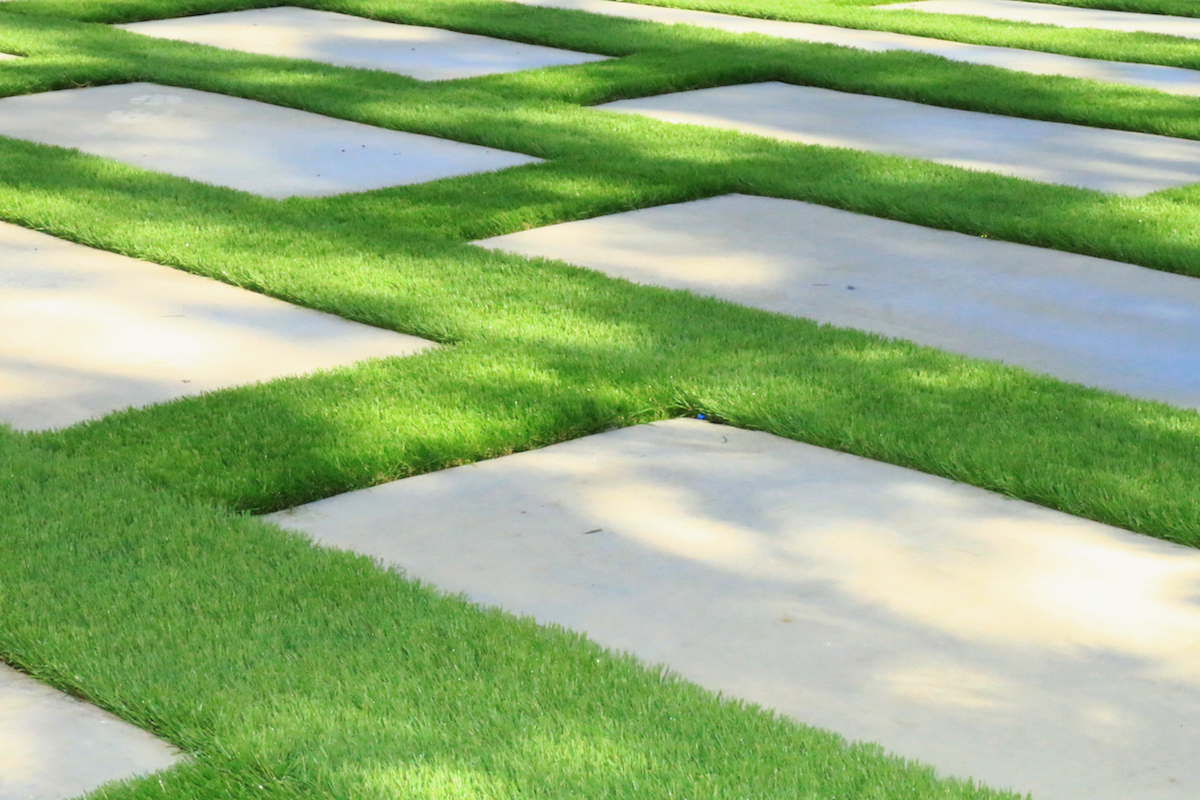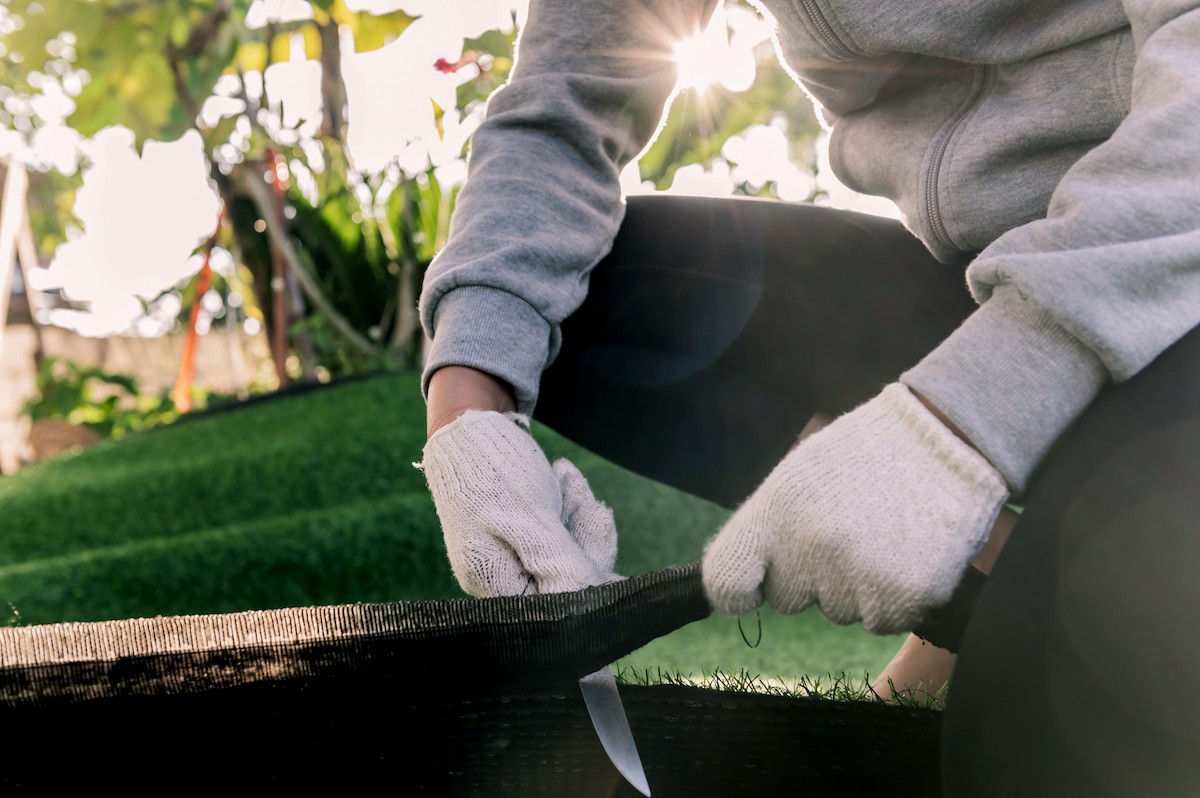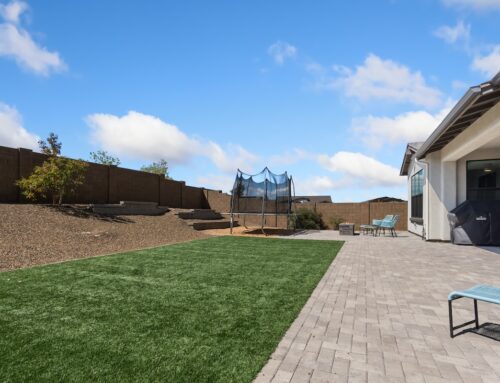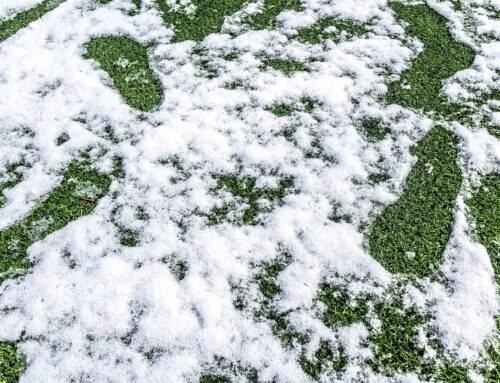Last Updated on August 11, 2023 by ReTurf
Used artificial turf, it’s a game-changer in the world of landscaping.
You might be wondering, “Why used?” or even, “Isn’t that stuff from sports fields?” Well…
The truth is, this reclaimed greenery can transform your spaces like nothing else. It’s not just about giving old turfs a new lease on life – though that’s pretty cool too!
By choosing used artificial turf, you’re opting for an economical and eco-friendly solution that ticks all the right boxes. Intrigued? Let’s dive deeper!
The Journey of Artificial Turf
Artificial turf, or synthetic grass or artificial grass, has revolutionized the world of sports and landscaping. Originally designed to replicate natural grass on playing fields for football and soccer games, it’s a favorite choice due to its durability and minimal maintenance needs.
Did you know that the first application of artificial turf was in 1966 at Houston Astrodome? It marked the beginning of an era where outdoor athletic fields and indoor facility turfs started embracing this innovation globally.
Turf fields are made from actual turf rolls filled with crumb rubber infill – this helps mimic the bounce effect found on natural grass surfaces. This combination can withstand general foot traffic during intense matches while providing excellent performance conditions regardless of weather variations.
Lifespan & Replacement Reasons
A typical lifespan for artificial turf is around eight to ten years depending upon usage intensity. But when we talk about larger football fields like those seen at college athletic levels, they may need replacement sooner because they endure more wear and tear owing to frequent games and rigorous training sessions.
Besides wear-and-tear factors contributing towards replacement, technological advancements leading to better quality synthetic turfs or changing player safety standards set by governing bodies overseeing different sports disciplines also play a role here.
Natural Grass vs. Artificial Turf
Maintaining natural grass isn’t easy. It requires high water consumption and susceptibility to seasonal changes affecting playability conditions adversely. Here’s where our hero – artificial turf comes into the picture, offering consistent field conditions year-round without demanding extensive upkeep efforts associated with their real sod counterparts.
When considering cost-effectiveness, despite initial installation costs being higher compared to laying down real sods, over time savings accrued from lower watering needs combined with reduced workforce hours spent maintaining these grounds make them the preferred choice, especially for long-term investments in infrastructure development within sporting arenas of various scales, ranging from local community parks up to professional league stadiums worldwide.

The ReTurf Solution
ReTurf is the game-changer in repurposing artificial turf from sports fields, breathing new life into used synthetic grass. This forward-thinking company embodies a solid commitment to sustainability.
The Collection Process
You might be curious about how ReTurf collects, and transports used turf from larger football fields without compromising its quality. The process begins with carefully handling actual turf rolls at stadiums, ensuring their condition remains optimal for reuse.
Following collection, each piece undergoes an extensive assessment, including sorting based on various factors such as length and overall usability. This rigorous selection process ensures that only top-quality reclaimed turfs are ready for their second innings.
Repurposing Used Turf
A significant part of ReTurf’s mission revolves around finding innovative ways to give collected turf another shot at glory beyond indoor sports facilities or outdoor athletic fields.
Parks have significantly benefited from these repurposed materials, offering lush green spaces sans natural grass’s watering requirements. Even office spaces have jumped onto this bandwagon by using them as indoor facility turf – adding a touch of outdoors while reducing wear caused by general foot traffic. Discover some unique ideas for giving your old synthetic greens a makeover here.
Economical Aspects of Using Reclaimed Turf
Regarding artificial turf, the financial aspect is a significant determinant. Getting caught up in initial costs and overlooking the bigger picture is easy.
New synthetic turf installation can be quite an investment. Costs vary but often fall within the $5-$20 per square foot range when you account for everything from actual turf rolls down to rubber infill needed for outdoor athletic fields or batting cages.
In contrast, artificial grass, like those reclaimed from football fields or college athletic fields, presents a more budget-friendly alternative without sacrificing quality or appeal.

Maintenance Savings with Repurposed Turf
The maintenance side of things is where repurposed turfs truly shine over natural grass. The latter requires constant care – watering, mowing, fertilizing – all of which add up significantly as time goes by.
Repurposed synthetic turfs, on the other hand, are low-maintenance champs. They need little more than occasional brushing and periodic topping-up of infill, if required, which translates into substantial savings in money and time.
Dollar-Smart DIY Projects
If you like hands-on home projects, recycled turfs could be very economical. From setting up indoor facility turfs to turning your backyard into a mini sports field – there’s potential for significant savings when using reused materials instead of buying new ones outright.
You might even consider adding some cool features like football yard numbers depending on your space availability and needs – either way, opting for recycled options will save bucks.
Potential Resale Value Boost
Beyond immediate purchase price reduction and maintenance cost savings, repurposed artificial grass could also increase property value. A well-kept landscape featuring durable synthetic lawns tends to attract prospective buyers due to their minimal upkeep requirements, thus boosting resale values appreciably.
The Gist:
Choosing ReTurf’s used artificial turf over new synthetic installations is a savvy move, offering substantial cost savings upfront and in maintenance. Plus, it can boost your property value while being eco-friendly – truly hitting the green jackpot.
Versatile Uses of Repurposed Turf
When you think about artificial turf, sports fields, and football yard numbers might be the first things that come to mind. But repurposed synthetic turf has many uses beyond just playing fields.
For instance, many homeowners turn to reclaimed artificial grass for landscaping. It’s an attractive alternative to natural grass because it stays green all year round without requiring water or regular mowing.

Lush Gardens with Minimal Upkeep
If you’ve yearned for a picturesque garden but lack the energy or means to keep it, recycled artificial turf may be your answer. You can create gorgeous outdoor spaces without worrying about watering plants or dealing with pests.
In commercial settings, too, businesses are using repurposed artificial turfs in innovative ways – from creating inviting outdoor areas that require minimal maintenance to adding unique design elements inside office buildings by incorporating indoor facility turf into workspaces.
Beyond Playgrounds: Recreational Areas & DIY Projects
The versatility doesn’t stop there. The cushioned surface and resilience against general foot traffic make synthetic turfs perfect for recreational areas like parks and playgrounds. And if you enjoy DIY projects at home – designing batting cages or decorating patios – these turf rolls offer endless possibilities.
Educational Institutions Embrace Used Turf
Schools across America aren’t far behind in embracing reused artificial grass either – larger football fields and smaller play areas within college athletic facilities now sport eco-friendly surfaces made of repurposed materials instead of traditional natural grass pitches. This saves them money and helps conserve significant amounts of water annually.
The Gist:
Repurposed artificial turf isn’t just for sports fields anymore. From residential landscaping to commercial design, DIY projects, and educational institutions – it’s a versatile, eco-friendly solution that saves water and money while providing lush green spaces with minimal upkeep.
Meet ReTurf – A Pioneer in Sustainability
If you’re searching for a sustainable solution for artificial turf, meet ReTurf. They have established themselves as an industry leader by giving retired synthetic turf fields another chance at life.
Their story began with recognizing the hidden value in discarded turfs from larger football fields and college athletic fields. Their mission was clear: reduce waste, conserve resources, and provide customers with savings without compromising quality or durability.
ReTurf offers reclaimed turf rolls suitable for various applications, such as indoor sports facilities or backyard landscaping projects. These rolls are tailored to different square footage requirements while ensuring longevity against the general foot traffic typically found in high-traffic areas like playing fields.

DIY Resources by ReTurf
Interested in repurposing used artificial grass yourself? Check out ReTurf’s DIY resources. These comprehensive guides offer US English instructions for homeowners and business owners alike, taking you through the entire process from product selection to installation.
You’ll also find detailed guidance on maintenance practices, which can help further extend the lifespan of the turf compared to natural grass counterparts commonly found in sporting venues today. ReTurf indeed leads the way in sustainability within this sector.
The Future is Green with Companies Like ReTurf
As we march towards a future where sustainability isn’t just a bonus but an absolute necessity, trailblazers like ReTurf are showing us the way. They’re giving used artificial turf a second life and championing the cause of educating people about its many benefits.
But let’s get one thing straight: The journey for these synthetic turfs doesn’t end when they are lifted off from football fields or sports arenas. Instead, this marks the beginning of another exciting chapter in their lifespan. By repurposing them into new uses and applications, companies like ReTurf are helping to cut down on waste and conserve resources that would otherwise be consumed in producing brand-new turfs.
Beyond this, initiatives such as ReTurf stand out because they also set benchmarks for other industries, demonstrating how products can enjoy multiple lives instead of being discarded after initial use. It’s no longer simply about going green; it’s about integrating sustainable practices into every aspect of our daily lives.
Educating Consumers
Apart from breathing new life into old artificial grasses and turning them back onto playing fields or even your backyard landscapes, one significant contribution made by ReTurf has been spreading awareness among consumers regarding responsible consumption habits and smart recycling choices. This includes sharing innovative ideas around DIY projects using reclaimed turf, which encourages creativity and fosters environmental consciousness at individual levels.
This wave of education extends beyond homeowners looking to jazz up their lawns or businesses seeking unique landscaping solutions – reaching schools and communities alike – illustrating clearly that everyone can play a part in reducing waste generation through intelligent product selection and usage.

A Sustainable Future Ahead
Essentially, companies like ReTurf are doing more than just selling recycled products – leading a significant shift toward conscious consumerism. This means recognizing that quality doesn’t always mean something new or disposable. By prioritizing profitability and ecological impact in their business models, these companies are helping us move closer to a greener future every day.
The Gist:
ReTurf is revolutionizing sustainability by giving used artificial turf a new lease on life, reducing waste, and conserving resources. They’re not just selling recycled goods; they’re reshaping consumer habits through education and fostering environmental consciousness. It’s more than going green—it’s about integrating sustainable practices into our daily lives.
FAQs about Used Artificial Turf
Can artificial turf be reused?
Absolutely. Companies like ReTurf specialize in reclaiming and repurposing used artificial turf, giving it a second life in various landscapes.
What are the arguments against artificial turf?
Critics often cite concerns about potential injuries, heat absorption, and the environmental impact of production and disposal. However, advancements in technology and sustainable practices are addressing these issues.
How many years does artificial turf last?
The lifespan of artificial turf varies based on usage but typically lasts 10 to 15 years in sports arenas before needing replacement.
What are the disadvantages of artificial turf?
Potential downsides include initial installation cost, heat retention during hot weather, lack of natural biodiversity, and the requirement for periodic maintenance to keep it looking fresh.

Conclusion
Used artificial turf has come a long way from its initial applications in sports arenas.
Today, it’s being reclaimed and repurposed by pioneers like ReTurf to breathe new life into various landscapes.
This eco-friendly solution reduces waste and conserves resources, making our planet greener, one turf at a time.
Beyond environmental benefits, the economic aspect of using repurposed turf is undeniable. It’s cost-effective without compromising on quality or aesthetics.
The versatility of used artificial turf is impressive – there are endless possibilities for landscaping homes, office spaces, or DIY projects!
If you’re ready to transform your space with sustainable solutions that save money while saving the environment…
Visit ReTurf, where we guide you through product selection and provide design assistance and after-installation care recommendations. Let’s give these turfs a second chance together!



